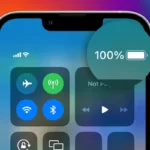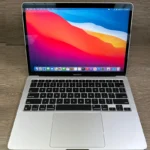Apple’s rumored smart glasses have sparked excitement in the tech world. These glasses could change how we use computers and see the world around us. Apple Glasses might blend digital info with what we see in real life, creating a new way to interact with technology.
The glasses are said to look like normal eyewear but with special tech inside. They may show things like maps, messages, and other info right in front of your eyes. This could make it easy to get info without looking at your phone.
Apple hasn’t said much about these glasses yet. But many think they could be a big deal in the future of tech. The glasses might work with iPhones and other Apple devices to make a seamless tech experience.
Apple Glasses: Peering into the Future of Augmented Reality
Apple Glasses have long been rumored to be Apple’s next big breakthrough. These augmented reality (AR) glasses could potentially change the way we interact with the digital world. While Apple hasn’t officially announced them yet, rumors and leaks have given us some insights into what we might expect.
Potential Features
| Feature | Description |
|---|---|
| AR Display | Overlay digital information and objects onto the real world, providing a seamless blend of the physical and virtual. |
| Sleek Design | Lightweight and stylish, resembling regular eyeglasses for everyday wear. |
| Standalone Functionality | Operate independently without needing to be tethered to an iPhone. |
| Eye Tracking and Gesture Control | Intuitive interaction with the AR interface through eye movements and hand gestures. |
| Siri Integration | Hands-free control and access to information using voice commands. |
Possible Use Cases
Apple Glasses could revolutionize various aspects of our lives, including:
- Navigation: Get real-time directions and information overlaid onto your surroundings.
- Communication: Receive notifications, messages, and calls without taking out your phone.
- Entertainment: Watch videos, play games, and experience immersive AR content.
- Productivity: Access information, documents, and collaborate with others in a virtual workspace.
- Healthcare: Assist with medical procedures, provide real-time health data, and offer remote consultations.
Release Timeline and Challenges
While the exact release date remains uncertain, rumors suggest a potential launch in late 2026 or even later. Developing such a complex device with a sleek design and powerful capabilities presents significant technological hurdles. Apple is likely working to overcome challenges in areas like battery life, display technology, and miniaturization.
Key Takeaways
- Apple Glasses could blend digital info with real-world views
- The glasses may look like normal eyewear with hidden tech inside
- They might work with other Apple devices for a smooth user experience
Design and Hardware Specifications
Apple Glasses aim to be sleek and functional. They blend advanced tech with a user-friendly design. The glasses may include features like wireless charging and eye tracking.
Physical Design and Materials
Apple Glasses might look like regular glasses. They could be made of light but strong materials. This would make them comfy to wear all day. The frame may come in different colors and styles. A digital crown could be on the side for easy control. The lenses might be custom-made for each user. A light seal around the eyes could block out extra light.
Display and Visual Technologies
The displays in Apple Glasses could be very high-tech. They may use tiny projectors to show images right on the lenses. This would let users see digital info mixed with the real world. The screens might have a high resolution for clear visuals. The tech could be like what’s in the Apple Vision Pro headset but smaller.
Sensors and Tracking
Apple Glasses may pack lots of sensors into a small space. These could include cameras and a LiDAR scanner. LiDAR helps map the area around you in 3D. Eye tracking tech might watch where you look to control things. The glasses could have motion sensors to know how you move. All these parts would work together to make the glasses respond to you and your surroundings.
Software and User Experience
Apple’s new glasses offer a smooth mix of apps and tools. The system works well with other Apple devices. It also has features that make it easy for everyone to use.
Operating System and Application Ecosystem
VisionOS powers Apple’s glasses. This new system is made for spatial computing. It lets users see and use apps in 3D space around them. The App Store has many apps made just for these glasses. Users can get their favorite iPhone and iPad apps too.
Third-party apps add more uses. Games, work tools, and fun apps are all part of the mix. The system uses AI to make apps work better in 3D. This means apps can react to where you look and move.
Accessibility and User Interface
The glasses have a simple UI that’s easy to learn. Users can control apps with their eyes, hands, and voice. This makes the glasses useful for people with different needs.
Apple added many features to help all users. Voice control lets people use apps without their hands. The system can make text bigger or change colors for easier reading. It can also describe what’s on screen for those who can’t see well.
Integration with Apple Products and Services
These glasses work great with other Apple devices. They can show your iPhone screen in the air. You can type on a Mac keyboard that appears in front of you. The glasses even work with AirPods for private sound.
Apple TV shows can float in your room. Your Apple Watch can control some glass functions. iCloud keeps your data in sync across all devices. This tight link with other Apple products makes the glasses very useful.
FAQs
Are Apple glasses coming out?
While Apple hasn’t officially confirmed their existence, rumors and leaks suggest that Apple Glasses are in development. However, a release date is still uncertain. The latest speculations point to a potential launch in late 2026 or even later, as Apple works to overcome technological challenges.
How much will Apple’s AR glasses cost?
The price of Apple Glasses remains speculative, but early estimates suggest they could be quite expensive. Some analysts predict a price point similar to the Apple Vision Pro headset, which starts at $3,499. Others suggest a more affordable option, potentially around $500 plus the cost of prescription lenses, if needed.
Will Apple glasses be prescription?
It’s highly likely that Apple Glasses will offer prescription lens options, similar to how the Apple Vision Pro headset works with Zeiss Optical Inserts. This would allow users with vision impairments to comfortably experience augmented reality without needing to wear their regular glasses underneath.







